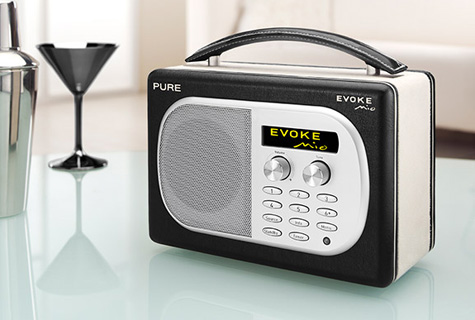Login form
Radio
 There is music in the air all around you. There are sounds of people talking in the air all around you. The sounds of music and talking are carried by radio waves. There are radio waves everywhere indoors and outdoors.
There is music in the air all around you. There are sounds of people talking in the air all around you. The sounds of music and talking are carried by radio waves. There are radio waves everywhere indoors and outdoors.
Radio waves are invisible. You cannot see or feel them. You can only hear radio waves if you turn on a radio. Radios turn radio waves into sound.
HOW DOES A RADIO WORK?
Radios need electricity in order to work. Your portable radio gets electricity from batteries. Your clock radio gets electricity from a cord that you plug into an electrical outlet in a wall.
Radios have a power switch or button that lets you turn the radio on or off. Radios have a volume control that lets you play the sounds loudly or softly. Radios also have a dial or button that lets you tune in your favorite radio stations. Each station has a special number on the dial. When you tune in a station, your radio turns radio waves from that station into sound.
Radios have a special wire called an antenna that can pick up radio waves in the air. Radios first turn the radio waves into electrical signals. Then they turn the electrical signals into the sounds of music, traffic and weather reports, or news about your hometown sports teams.
HOW DO RADIO WAVES GET INTO THE AIR?
A radio station sends electrical signals through wires to a tall tower called a broadcast antenna. Electrical signals get changed into radio waves at the antenna. The antenna sends the radio waves out in all directions.
Some radio stations broadcast on AM radio waves. Some programs are broadcast on FM waves. AM radio waves travel farther than FM waves, but FM waves make clearer sounds. Most radios can pick up both AM and FM radio waves.
TWO-WAY RADIO
Radio broadcasts only go one way, from the station to your radio. You can listen to radio, but you cannot talk back. Two-way radio lets people talk to each other on radio waves.
Police officers and firefighters use two-way radio. Firefighters at a big blaze can call for more help on their two-way radios. Soldiers use two-way radios on battlefields.
CELL PHONES AND WIRELESS COMPUTERS
Cell phones use radio waves. Your cell phone sends your phone calls on radio waves to an antenna. The antenna passes your call along. You can talk on a cell phone in a car, on a bus, or just when you are walking around.
Some computers hook up to the Internet with radio waves. These computers have special antennas that can find wireless “hot spots.” These computers do not need to be plugged into a telephone line to surf the Internet.
OTHER WAYS WE USE RADIO WAVES
The radar that lets airplanes and ships “see” things in fog or things far away uses radio waves. Radar systems send out radio waves. The radio waves bounce back from any large object they hit and make images on a radar screen.
Radio waves help us explore deep space. Radio telescopes listen for radio waves from far away in the universe. Astronauts in spacecraft talk to control centers on Earth using radio waves. Radio waves beam pictures to Earth from cameras on space probes visiting other planets.
Doctors use radio waves to see inside the body. They use radio waves from MRI machines to make pictures of people’s insides.
WHO INVENTED RADIO?
During the 1800s, several scientists made discoveries that led to the invention of radio. An Italian inventor named Guglielmo Marconi sent the first sounds on radio waves in 1895. The sounds he sent were just clicks. The clicks were a kind of code that carried telegraph messages. People already knew how to send telegraph messages over wires on land. Telegraph messages sent on radio waves helped ships at sea where there were no wires. Sinking ships could send messages calling for help.
Other inventors learned how to send music and voices over radio waves. Radio stations began broadcasting programs in the 1920s. Families used to gather around the radio to listen to band music, soap operas, or other radio programs.
Inventors have found more and more uses for radio waves. Radio waves have become very important for helping you stay in touch with family and friends.
Source: Microsoft ® Encarta

